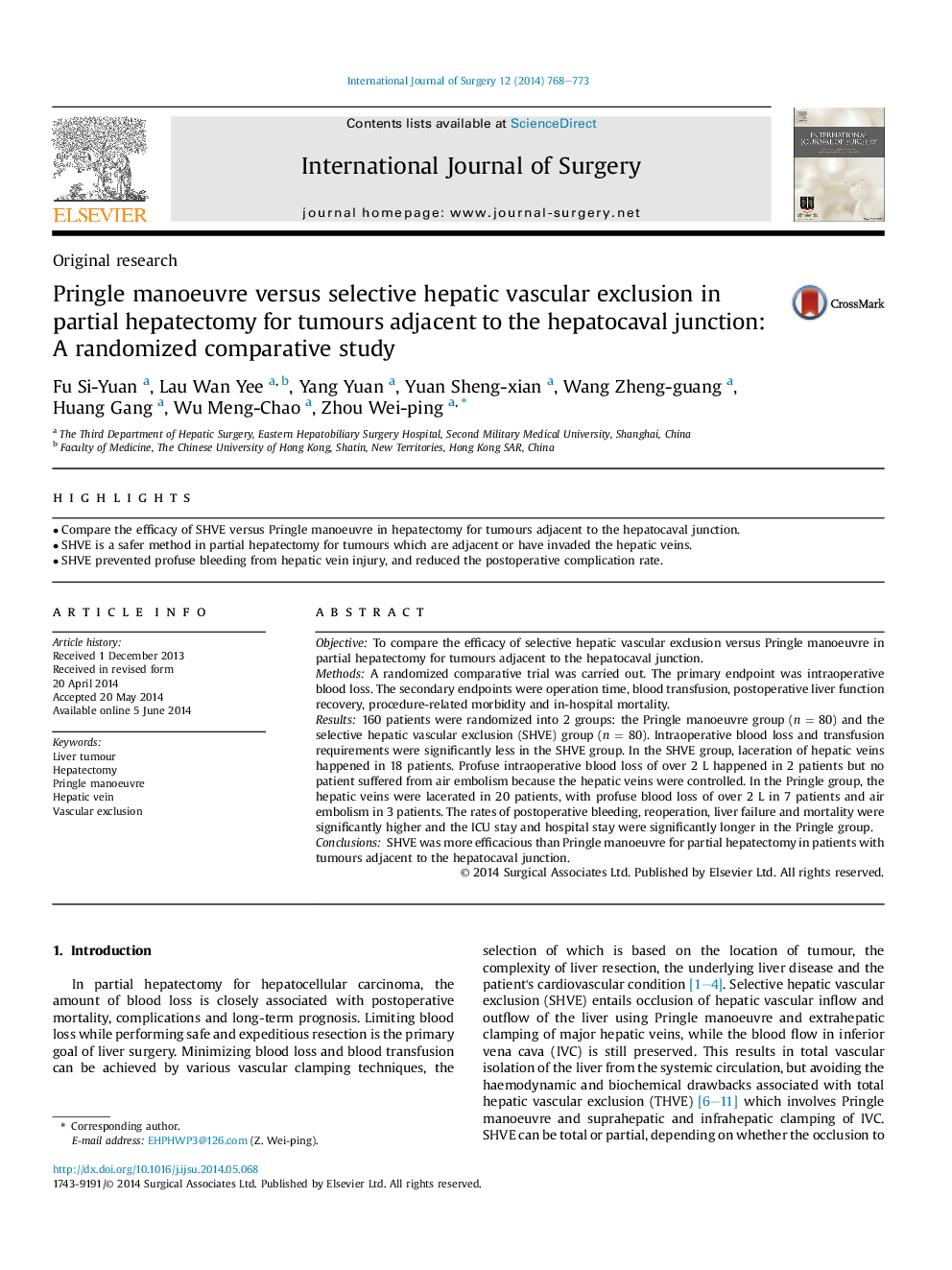| Article ID | Journal | Published Year | Pages | File Type |
|---|---|---|---|---|
| 4286542 | International Journal of Surgery | 2014 | 6 Pages |
•Compare the efficacy of SHVE versus Pringle manoeuvre in hepatectomy for tumours adjacent to the hepatocaval junction.•SHVE is a safer method in partial hepatectomy for tumours which are adjacent or have invaded the hepatic veins.•SHVE prevented profuse bleeding from hepatic vein injury, and reduced the postoperative complication rate.
ObjectiveTo compare the efficacy of selective hepatic vascular exclusion versus Pringle manoeuvre in partial hepatectomy for tumours adjacent to the hepatocaval junction.MethodsA randomized comparative trial was carried out. The primary endpoint was intraoperative blood loss. The secondary endpoints were operation time, blood transfusion, postoperative liver function recovery, procedure-related morbidity and in-hospital mortality.Results160 patients were randomized into 2 groups: the Pringle manoeuvre group (n = 80) and the selective hepatic vascular exclusion (SHVE) group (n = 80). Intraoperative blood loss and transfusion requirements were significantly less in the SHVE group. In the SHVE group, laceration of hepatic veins happened in 18 patients. Profuse intraoperative blood loss of over 2 L happened in 2 patients but no patient suffered from air embolism because the hepatic veins were controlled. In the Pringle group, the hepatic veins were lacerated in 20 patients, with profuse blood loss of over 2 L in 7 patients and air embolism in 3 patients. The rates of postoperative bleeding, reoperation, liver failure and mortality were significantly higher and the ICU stay and hospital stay were significantly longer in the Pringle group.ConclusionsSHVE was more efficacious than Pringle manoeuvre for partial hepatectomy in patients with tumours adjacent to the hepatocaval junction.
